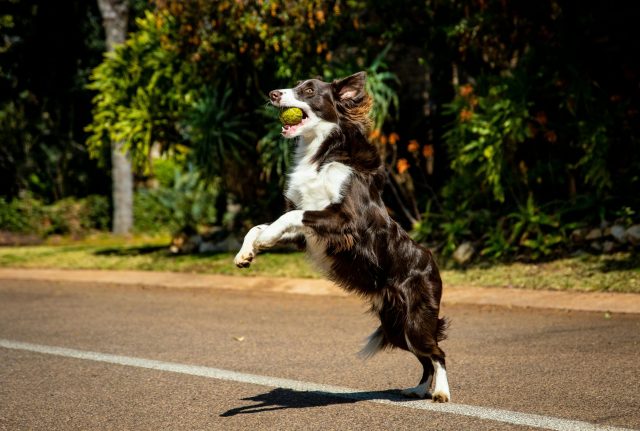If you’re a dog owner, you’ve likely witnessed your furry friend suddenly burst into a frantic sprint around the house or yard, seemingly out of nowhere. This seemingly erratic and high-energy behavior is commonly referred to as “dog zoomies.” Understanding what dog zoomies are and why they happen can help you better comprehend your dog’s behavior and ensure their well-being.
In this article, we will delve into the phenomenon of dog zoomies, define what they are, explore the reasons behind them, identify common triggers, and discuss whether they are normal. We will also provide tips on how to manage dog zoomies and when you should be concerned about them.
Introduction to What Are Dog Zoomies And Why Do They Happen?
Dog zoomies, also known as Frenetic Random Activity Periods (FRAPs), are a common and often entertaining behavior observed in dogs. These bursts of energy can be both amusing and perplexing to dog owners. To better understand your pet’s behavior, it is essential to explore what dog zoomies are and why they happen. By doing so, you can ensure that your dog remains safe during these high-energy episodes and address any underlying issues that may be contributing to this behavior.
Find Out Which Dog Breeds Are The Most Playful And Energetic
Defining Dog Zoomies
Dog zoomies are sudden, intense bursts of energy that cause dogs to run around wildly, often in circles or back and forth. Rapid, unpredictable movements characterize this behavior, and it can occur indoors or outdoors. Zoomies are usually short-lived, lasting only a few minutes, but they can leave a lasting impression on anyone who witnesses them. Common behaviors associated with dog zoomies include:
- Running at high speeds
- Sharp turns and sudden stops
- Playful barking or growling
- Bowing or play postures
Why Do Dog Zoomies Happen?
There are several reasons why dog zoomies happen, and these can vary from one dog to another. Understanding these reasons can help you better manage this behavior. The main factors include:
1. Physical Release
Dogs often experience zoomies as a way to release pent-up energy. This is especially common in puppies and young dogs who have a lot of energy to burn. After periods of rest or inactivity, such as after a nap or being confined, dogs may use zoomies to expend excess energy.
2. Emotional Expression
Zoomies can also be a way for dogs to express excitement, happiness, or relief. For example, your dog might get the zoomies after a bath, when a favorite person comes home, or during playtime with other dogs.
3. Environmental Stimulation
Certain environmental factors can trigger zoomies in dogs. These include changes in the weather, new or exciting surroundings, or specific times of the day, such as early morning or late evening when temperatures are cooler.
Common Triggers for Dog Zoomies
Understanding the common triggers for dog zoomies can help you anticipate and manage this behavior. Some typical triggers include:
1. Playtime and Exercise
Engaging in playtime or physical exercise can often lead to zoomies, as dogs become excited and energized.
2. Bath Time
Many dogs experience zoomies after a bath, possibly as a way to dry off, release pent-up energy, or simply because they feel refreshed.
3. After Meals
Some dogs may get the zoomies after eating, particularly if they are excited or if mealtime is followed by a rest period.
4. Evening Hours
Zoomies are often more common in the evening when dogs have built up energy throughout the day, and temperatures are cooler, making it more comfortable for them to run around.
Are Dog Zoomies Normal?
Dog zoomies are generally considered a normal and healthy behavior. They are a natural way for dogs to release energy and express their emotions. However, frequent or overly intense zoomies may indicate that your dog is not getting enough physical or mental stimulation. In such cases, it is essential to ensure that your dog is getting adequate exercise and engaging in activities to prevent excessive zoomies.
How to Manage Dog Zoomies
Managing dog zoomies involves ensuring your dog’s safety and addressing the underlying causes of the behavior. Here are some tips to help you manage dog zoomies effectively:
Provide Regular Exercise
Ensure that your dog gets regular exercise to help burn off excess energy. This can include daily walks, playtime, and engaging in activities such as fetch or agility training.
Discover The 15 Dog Breeds That Are The Ultimate Playmates For Your Kids
Create a Safe Space
If your dog tends to get zoomies indoors, create a safe space where they can run around without the risk of injury or damage to your home. Remove any obstacles or breakable items from the area.
Use Positive Reinforcement
Encourage calm behavior through positive reinforcement. Reward your dog with treats or praise when they exhibit calm behavior and redirect their energy to appropriate activities, such as playing with toys.
When to Be Concerned About Dog Zoomies
While zoomies are typically normal, there are situations where you should be concerned about this behavior. If your dog exhibits excessive zoomies, seems overly anxious or stressed, or if other concerning behaviors accompany zoomies, it may be time to seek professional advice. Additionally, if your dog’s zoomies result in injury to themselves or damage to your home, it is essential to address the behavior promptly.
Learn About The 9 Dog Breeds That Frequently Get The Zoomies
Conclusion: Understanding Dog Zoomies and Ensuring Your Dog’s Well-being
In conclusion, understanding what dog zoomies are and why they happen can help you manage this behavior effectively. By recognizing the triggers and ensuring your dog gets enough physical and mental stimulation, you can help minimize zoomies and ensure your dog’s well-being. Remember that zoomies are a normal part of dog behavior, but if you have any concerns, do not hesitate to seek professional guidance. By observing and understanding your dog’s behavior, you can create a safe and happy environment for your furry friend.







